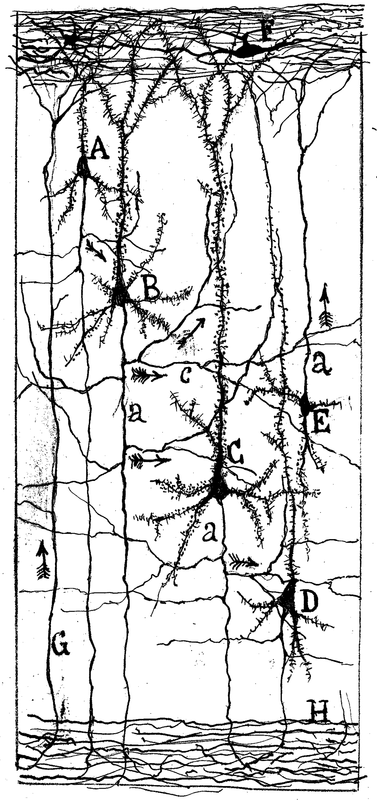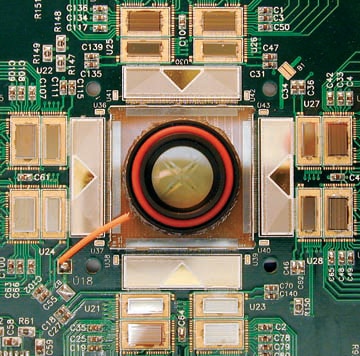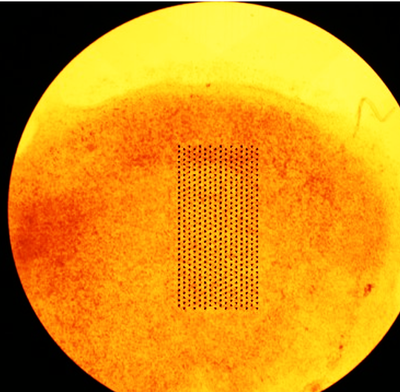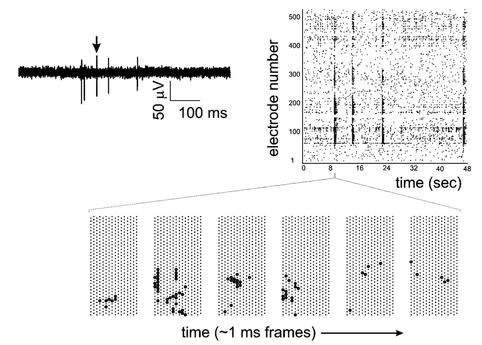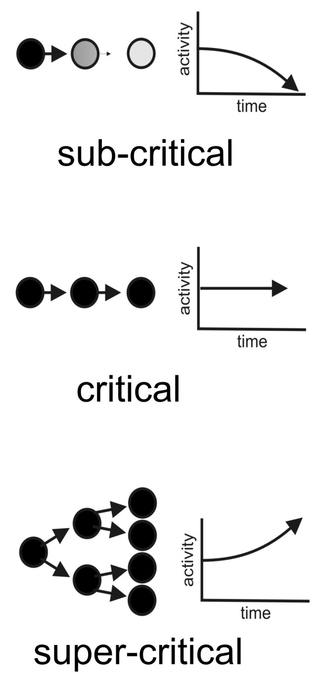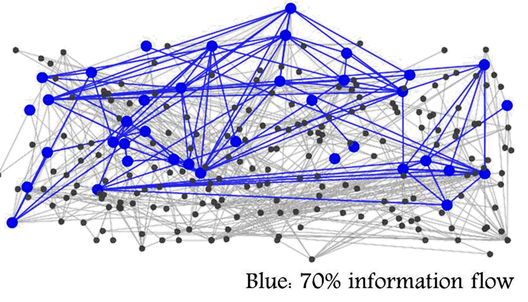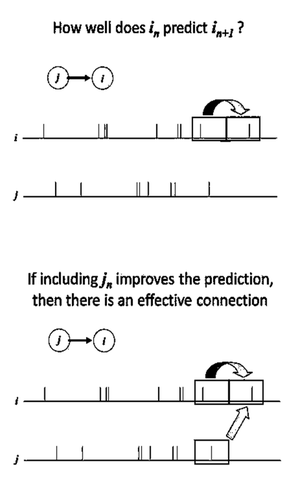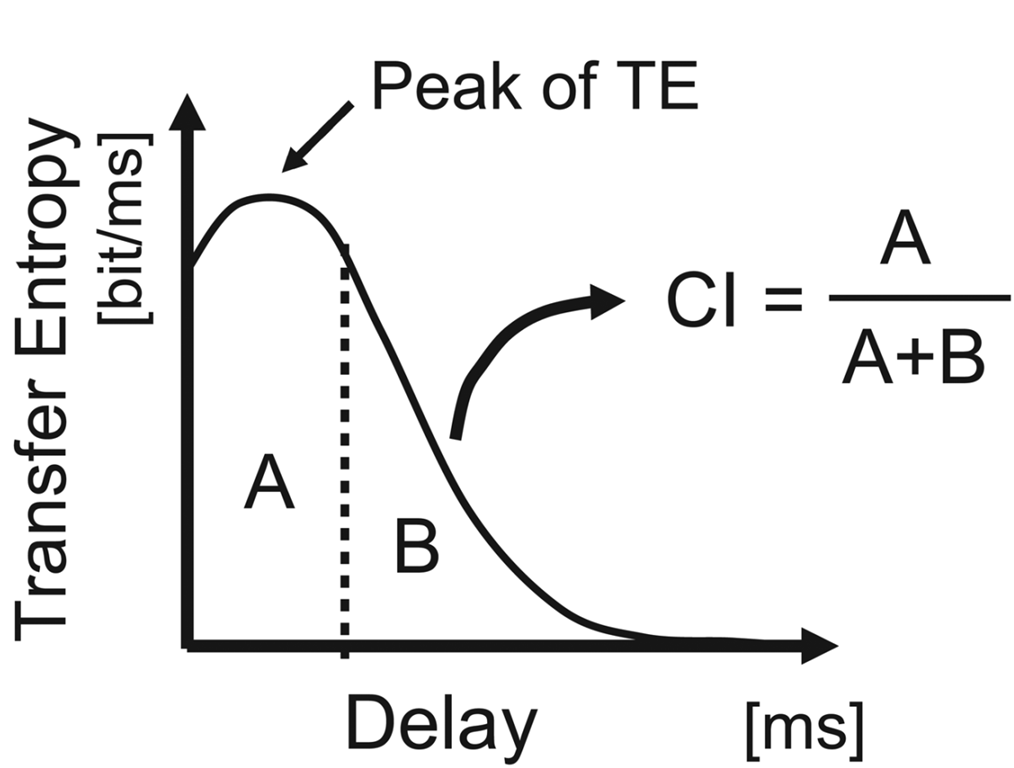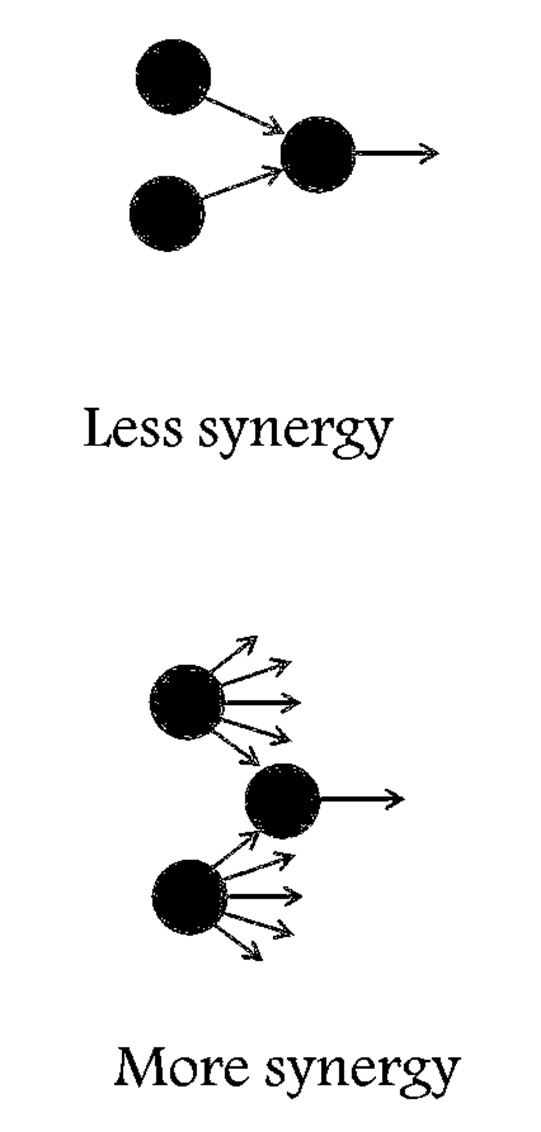|
We are motivated by one central question: What types of collective activity emerge when hundreds of closely-spaced neurons interact in the mammalian cortex? We have chosen to focus on three areas:
|
Simultaneous recording of neurons in cortical networks using multielectrode arrays (MEAs)
|
We record spiking activity simultaneously from hundreds of cortical neurons in cortical slice cultures and acute cortical slices. We do this with a custom-designed 512 microelectrode array. Our temporal resolution is sub-millisecond, well below the 2 - 5 ms synaptic delays typical for closely-spaced neurons in cortex. Our interelectrode spacing is 60 microns, enhancing chances of recording from synaptically-coupled neurons. Our recording durations can reach several hours at a time, providing excellent statistical power. No other approach can currently match this combination of high neuron count, long duration recordings, high temporal resolution, and good spatial resolution. These features give us excellent data sets for investigating collective activity in networks of cortical neurons. We have chosen to work in vitro because of these superior features, and we collaborate with teams who record large numbers of neurons in vivo to ensure that our findings have parallels in the intact brain.
|
Looking for hallmarks of criticality in cortical networks
|
Critical phenomena refers to the switching from one collective organizational state to another due to changing parameters. The critical point or criticality is the in-between state at which that switching is taking place. A common example of a critical point is water at 100 °C, where it is between its liquid and vapor states. Some complex systems in nature self-organize to the critical point. (See the works of Per Bak)
When a neuron in a network becomes active, it will send signals that may activate other neurons a short time later. It is possible to estimate experimentally how many “descendant” neurons are activated by one “ancestor” neuron. When one neuron, on average, activates more than one neuron, then the number of active neurons in a network grows over time, eventually producing a seizure. We will call this the super-critical state. In contrast, when one neuron, on average, activates less than one neuron, then the number of active neurons in a network declines over time, eventually producing complete inactivity. We will call this the sub-critical state. At the critical point, when one neuron, on average, activates one other neuron, the number of active neurons in a network remains fairly constant over time, and only gradually dies out. From an information theoretic standpoint, being at criticality also optimizes the capacity of networks to carry information Because it is so important for healthy, operating neuronal networks to operate close to criticality, they make great model systems for studying self-organized criticality. We have shown experimentally that healthy networks of neurons tend to self-organize and operate close to the critical point. Some of our recent theoretical studies have demonstrated physical constraints on real neurons from operating at true criticality, instead requiring the definition of a 'quasicritical' point (similar to what is seen with magnetic spin organization in the presence of an external magnetic field) to describe critical behavior. |
Functional connectivity patterns in cortical neurons
|
The functional connectivity between a pair of neurons measures their tendency to affect each other rather than their ability to affect each other (i.e. their physical connectivity).
With the BRAIN initiative in the US and the Human Brain Project in the EU, the area of connectomics is receiving increased funding and research attention. We have measured functional connectivity between cortical neurons using maximum entropy approaches, transfer entropy and wavelet-based correlations. We have demonstrated that:
|
Exploring synergy in networks of neurons
|
In order to measure how information flows are combined in cortical neural networks, we use a newly-defined measure called “synergy” (Timme, Ito et al. 2016). This can be considered a first step toward quantifying computation in cortical networks.
Our work on synergistic computation:
|
